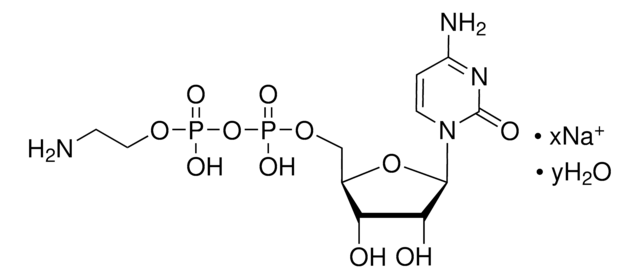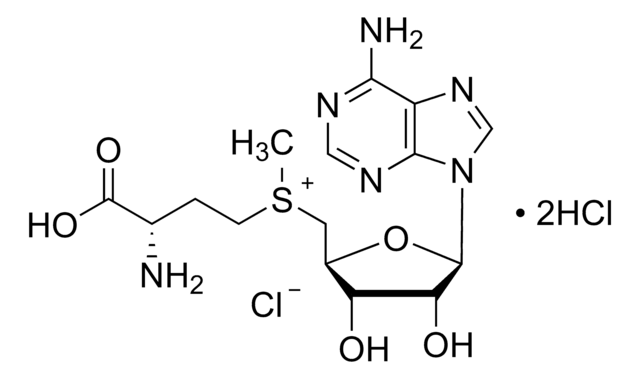推薦產品
生物源
Streptomyces sp.
品質等級
化驗
≥95%
形狀
powder
技術
cell culture | mammalian: suitable
顏色
red, powder
mp
251-253
溶解度
ethanol, DMSO: soluble (Stable in aqueous solutions at 2-8 °C.)
抗生素活性譜
neoplastics
作用方式
DNA synthesis | interferes
儲存溫度
2-8°C
SMILES 字串
CC(C)[C@H]1NC(=O)[C@@H](NC(=O)c2ccc(C)c3OC4=C(C)C(=O)C(N)=C(C(=O)N[C@H]5[C@@H](C)OC(=O)[C@H](C(C)C)N(C)C(=O)CN(C)C(=O)[C@@H]6CCCN6C(=O)[C@H](NC5=O)C(C)C)C4=Nc23)[C@@H](C)OC(=O)[C@H](C(C)C)N(C)C(=O)CN(C)C(=O)[C@@H]7CCCN7C1=O
InChI
1S/C62H86N12O16/c1-27(2)42-59(84)73-23-17-19-36(73)57(82)69(13)25-38(75)71(15)48(29(5)6)61(86)88-33(11)44(55(80)65-42)67-53(78)35-22-21-31(9)51-46(35)64-47-40(41(63)50(77)32(10)52(47)90-51)54(79)68-45-34(12)89-62(87)49(30(7)8)72(16)39(76)26-70(14)58(83)37-20-18-24-74(37)60(85)43(28(3)4)66-56(45)81/h21-22,27-30,33-34,36-37,42-45,48-49H,17-20,23-26,63H2,1-16H3,(H,65,80)(H,66,81)(H,67,78)(H,68,79)/t33-,34-,36+,37+,42-,43-,44+,45+,48+,49+/m1/s1
InChI 密鑰
RJURFGZVJUQBHK-IIXSONLDSA-N
尋找類似的產品? 前往 產品比較指南
一般說明
應用
生化/生理作用
注意
準備報告
其他說明
訊號詞
Danger
危險聲明
危險分類
Acute Tox. 2 Oral - Carc. 1B - Repr. 1B
儲存類別代碼
6.1A - Combustible acute toxic Cat. 1 and 2 / very toxic hazardous materials
水污染物質分類(WGK)
WGK 3
閃點(°F)
Not applicable
閃點(°C)
Not applicable
個人防護裝備
Eyeshields, Faceshields, Gloves, type P3 (EN 143) respirator cartridges
分析證明 (COA)
輸入產品批次/批號來搜索 分析證明 (COA)。在產品’s標籤上找到批次和批號,寫有 ‘Lot’或‘Batch’.。
客戶也查看了
文章
Antibiotic kill curve is a dose response experiment in which mammalian cells are subjected to increasing amounts of selection antibiotic
Antibiotic kill curve is a dose response experiment in which mammalian cells are subjected to increasing amounts of selection antibiotic
條款
Protocol Guide: XTT Assay for Cell Viability and Proliferation
我們的科學家團隊在所有研究領域都有豐富的經驗,包括生命科學、材料科學、化學合成、色譜、分析等.
聯絡技術服務









